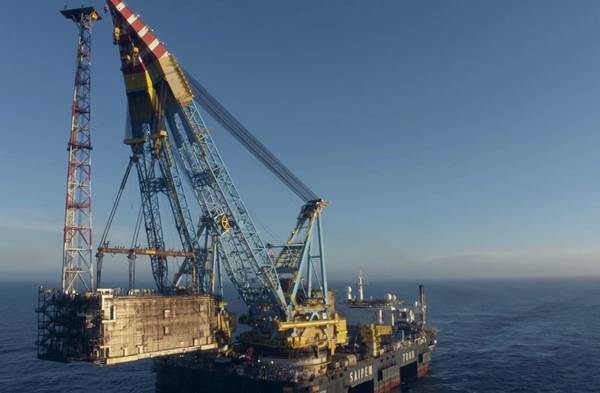
The North Sea decommissioning picture is murky at best, and its constantly evolving timetable is proving difficult to plan for, judging by the qualifying comments of a number of operators and regulators, of late.
While the technology of offshore infrastructure removal now includes impressive cutting devices for the North Sea’s tubular towers and subsea structures, the timeline for their eventual use continues to change. So much so, that operators continue to avoid setting dates, just as reservoir and wellhead quality — not to mention life-extension aspirations — tamper with timetables.
Oddly, finance — long feared to be the chief stumbling block of decommissioning — has fallen away as a major concern. The majors have largely incorporated costs into project or field entry, asset swap deals or environmental spending.
Decommissioning for some of the majors has become a standard accounting line under “retirement”. For others, it’s an accounting policy note made for shareholders or part of another cost structure.
ConocoPhillips’ projected “asset retirement obligations and accrued environmental costs” entering 2019 were $7.63 billion. While that’s a hefty bill — and not just decommissioning costs — lump sums in bank accounts worldwide sit as testimony to the company’s commitment to infrastructure takedown where warranted. It’s just that decommissioning is now “retirement”.
Equinor, like ConocoPhillips’, reminds investors that, “Most of the removal activities are many years into the future, and the removal technology and costs are constantly changing.” Still, it’s busy enough for the Norwegian Petroleum Society to be hosting its 20th Decommissioning Conference in Stavanger in March 2020.
Little press
What we do know is that decommissioning activity for ConocoPhillips is ongoing at the Theddlethorpe gas terminal, where production ceased in August 2018. Decommissioning in the Southern North is “ongoing” as ConocoPhillips has stopped producing there.
Clouding Norway-sector decommissioning timing are the 30-odd oilfields seen as suitable or potentially suitable as life-extension projects. New discoveries and popular licensing rounds in mature acreage has only increased interest in older infrastructure (see Draugen).
When it happens, Norway-sector decommissioning work is often done in-stride. The Volve field wells were plugged and abandoned (P&A) with little fanfare, and from now to 2023 the Huldra and Ekfofisk removal campaigns will “gather pace”.
Wells at Huldra, dead since 2014, were all P&A’d by 2017. The platform is being cut to pieces as we write, but few headlines herald the work.
Ekofisk is seeing its third removal campaign, although we largely only hear of life extension at this megaproject. Platforms there, too, were being scrapped during 2019.
In these examples, decommissioning seemed to spring forth quickly. It’s not always the case.
At Aker BP’s Valhall field, where subsidence has been an issue, sandstone has been identified as a possible source of future leakage. A meeting of regulators and the operator revealed cause for pause.
Whatever timeline was set out was moderated by inspectors. While a standard UK decommissioning contract now exists for suppliers, Valhall reveals inspections can still set an operator and its supply chain back: a plan to “to re-establish the original barriers” closing off old wells with seabed rock turned out not be enough in a Norway heavily focused on “barriers” to disaster.
Inspector delays
Valhall revealed that large sand zones impeding stability might be larger than thought when wellheads were planned. It also revealed regulators can slow things down.
At the Gyda Well Abandonment Project — a decommissioning P&A campaign involving 28 old ’80s-era wells (connected to the Forties system) were found by safety inspectors to have been fine. However, the training of those providing inspectors with safety reporting was found to be wanting.
Finally, deciding where to concentrate decommissioning resources has become hard to pin down. According to Rystad Energy, Europe’ share of a $12-billion-a-year decommissioning pie will shrink by a billion dollars to $3. 5 billion in 2020-21; South America’s will soar over fourfold; Africa’s will triple and the Middle East’s decommissioning market will be cut in half.



